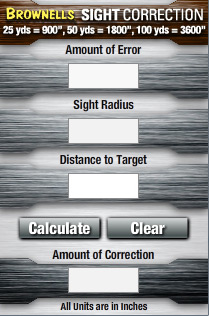- Joined
- Mar 23, 2021
- Messages
- 2,367
- Reaction score
- 4,927
I am putting new sights on my old Jaeger to make them more user friendly for my aging eyesight and thought that the formulas for adjusting them may be of interest.
Easiest
Sight radius (distance between sights in inches) X distance to move impact on target in inches / divided by distance to target in inches = equals amount to move sight
distance to target
25 yards = 900 inches
50 yards = 1800 inches
100 yards = 3600 inches
example
Jaeger 20" sight to sight X 1" distance to move impact / 900 for 25 yards
20 X 1 / 900 = .0222222
Harder method, adjusting for MOA
For different distances if you know the Minutes of angle you want to move
Sight radius in inches X .000291 = 1 MOA
1 MOA =
50 yards =.5235987
100 yards = 1.0471975
200 yards = 2.09439
Example, my Virginia rifle with 37" sight radius is shooting 2" high at 50 yards
37" X .000291 = .010767
2" /yardage .5235987 = 3.73143378477
3.73143378477 X .010767 = .0401763 (distance to move)
Just throwing it out there if it helps anyone, just in case anyone takes dial calipers to the range
Easiest
Sight radius (distance between sights in inches) X distance to move impact on target in inches / divided by distance to target in inches = equals amount to move sight
distance to target
25 yards = 900 inches
50 yards = 1800 inches
100 yards = 3600 inches
example
Jaeger 20" sight to sight X 1" distance to move impact / 900 for 25 yards
20 X 1 / 900 = .0222222
Harder method, adjusting for MOA
For different distances if you know the Minutes of angle you want to move
Sight radius in inches X .000291 = 1 MOA
1 MOA =
50 yards =.5235987
100 yards = 1.0471975
200 yards = 2.09439
Example, my Virginia rifle with 37" sight radius is shooting 2" high at 50 yards
37" X .000291 = .010767
2" /yardage .5235987 = 3.73143378477
3.73143378477 X .010767 = .0401763 (distance to move)
Just throwing it out there if it helps anyone, just in case anyone takes dial calipers to the range








